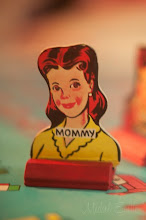As I said in the ISO entry we can imagine our camera to function like our eyes. If we imagine blinking to be like the shutter then our iris or pupil (black circle of our eye) is like the camera's lens aperture. In dim light our pupil enlarges to let in more light and in bright light it constricts. This performs the same function in our camera. What we see is the light that reflects off objects. That is what our camera is also capturing. As light enters the camera through the lens, it falls on and exposes the film (or sensor in digital cameras). Too much light and the photo is 'burned' white and too little light and the photo is black. The camera's job is to expose the film/sensor to the proper amount of light. Modern day cameras do a great job at this by balancing the aperture and shutter speed to let the correct amount of light in, but by understanding the effects of manipulating the aperture we can make a normal photo exceptional.
As I said the aperture is like our iris. In cameras the aperture is formed by overlaping pieces of metal, or blades, which can slide together to form a smaller or larger opening. I hope you can see the blades in this photo. Some lenses have a lot of blades like this one, but some have very few (as few as two, I think).

In photography we assign numbers to the aperture size so we can share and know the size for future reference. You might hear it referred to as the aperture number, f value, or f stop. The numbers will look something like 1.0, 1.8, 2.8, 3.6, 5.6, 8, 11, 18, or 22, for example. A f value of 1.0 would be very large and an f value of 22 is very small. It seems confusing, but I'll tell you a trick to remembering them later.

As I said, when your shutter opens light spills in through the aperture in your lens and onto the film/sensor. If the aperture is very large a lot if light is spilling in, so to keep too much light from entering the shutter speed will be faster. So lenses that can go all the way to 1.1, 1.8, 2.8 are considered fast lenses. Many kit or consumer grade zooms can only go to about 4.5.
Why do you want to be able to go to larger apertures? Well there are a few advantages. One, since it is letting more light in, these lenses can take photos in lower light settings without using a flash. On camera flashes can be harsh and ruin a otherwise great photo by losing the subtle shadows that give a photo its depth. Two, the image resulting from a lens with a large aperture will yeild a sharper, crisper photograph with beautiful details when you zoom in or crop the photo. Third controlling the aperture controls what is in focus in the photograph. The photo below is a good example because it is easy to see the blur in the foreground the small plane that is in focus and then the blurred background.

Some say it is the ability to select the area of focus that sets apart a slr camera (the ones with interchangeable lenses) from a point and shoot.
In the next blog entry I will tell you how to control your depth of field (what is in focus and what is not) by adjusting your aperture.


No comments:
Post a Comment